- Home
- Prelims
- Mains
- Current Affairs
- Study Materials
- Test Series
 EDITORIALS & ARTICLES
EDITORIALS & ARTICLES
21th Nov 2021
SAURABH KIRPAL: THE MAN WHO COULD BE INDIA'S FIRST OPENLY GAY JUDGE
Saurabh Kirpal will be India’s first openly gay judge.
 LGBT:
LGBT:

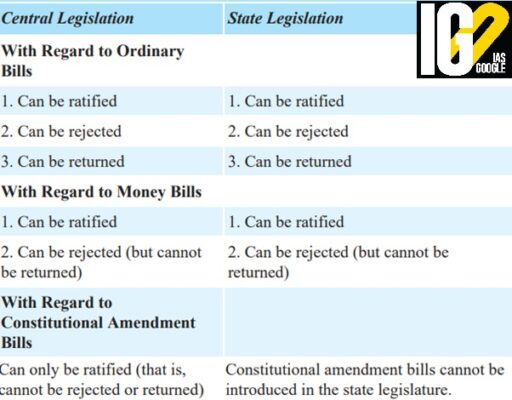
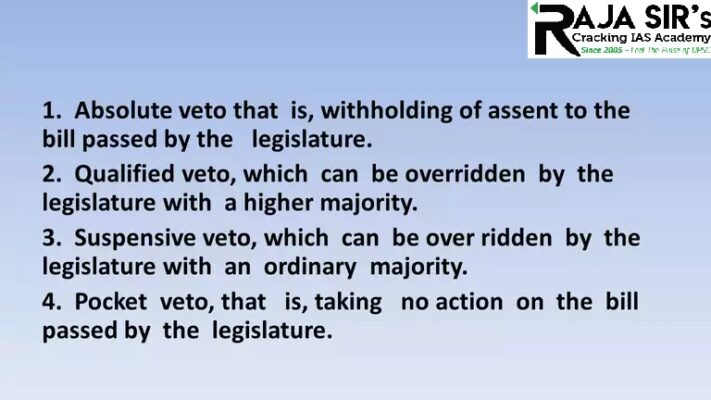

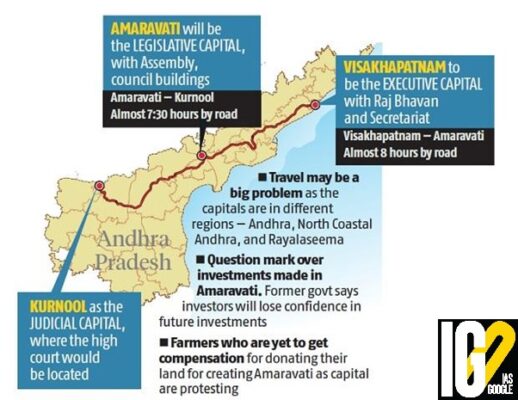
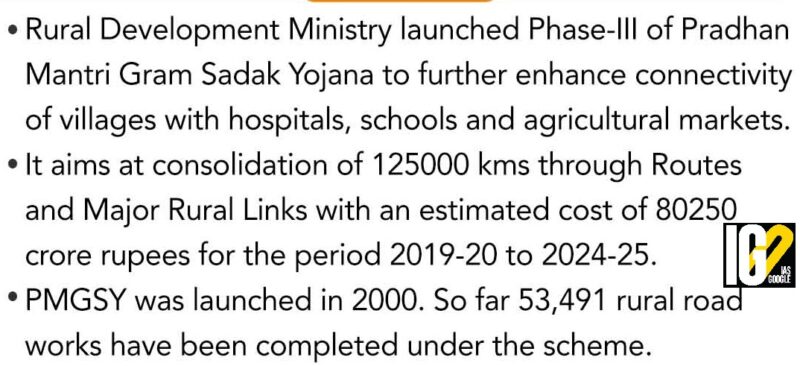




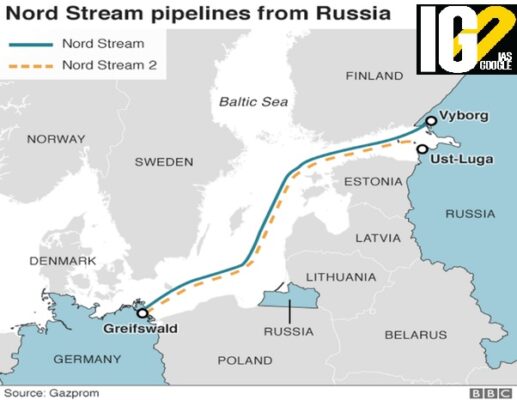

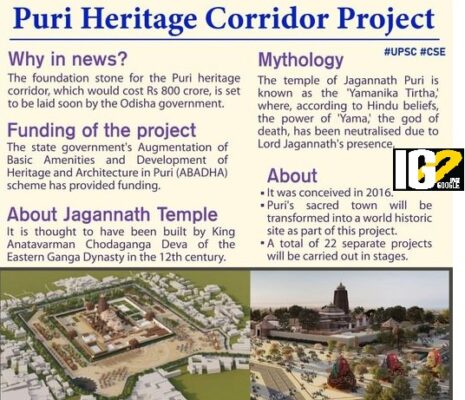
 LGBT:
LGBT:
- LGBT is an initialism that stands for lesbian, gay, bisexual, and transgender.
- Rigveda says Vikriti Evam Prakriti-meaning what seems unnatural is also natural, and hence some scholars believe in homosexual/transsexual dimensions of human life.
- The ancient Indian text Kamasutra written by Vatsyayana dedicates a complete chapter on erotic homosexual behaviour.
- Article 15 of the Constitution explicitly mentions to prohibit discrimination on the basis of sexual orientation and gender identity.
- In 2014, the Supreme Court of India declared transgender people a socially and economically suppressed class.
- The court entitled them to reservations in education and jobs, and also directed union and state governments to frame welfare schemes for them.
- In 2017, the Supreme Court gave LGBT community the freedom to safely express their sexual orientation.
- Therefore, an individual's sexual orientation is protected under the country's Right to Privacy
- In 2018, in the landmark decision of Navtej Singh Johar v. Union of India, the Supreme Court of India decriminalised consensual homosexual intercourse by reading down Section 377 of the Indian Penal Code and excluding consensual homosexual sex between adults from its ambit.
- LGBT community are subjected to inequality in all spheres of life like education, employment and social inclusion among many.
- People’s prejudices lead them to think that LGBT people are odd and very different.
- They face stringent opposition from religious sects and are constantly threatened to be stripped off from their religion.
- They face mental, physical, emotional and economic violence.
- Lesbian women are subjected to family-sanctioned corrective rapes, which are often perpetrated by their own family members.
- They are labelled by the society as mentally unstable and are forced to take medical treatment for the same.
- In rural India, lesbian women and transmen in rural areas end up at the bottom of the hierarchy when it comes to basic human rights within the unit of family and village.
- One of the major factors that results in the stigmatization of LGBT people is parental reaction towards homosexuality.
- Most LGBT people are acceptable to family only if they agree to behave like heterosexuals.
- India has traditionally recognised a third gender population, considered by society as neither male or female.
- Such individuals are known as hijras.
- Hijras were legally granted voting rights as a third sex in
- It was launched by the Ministry of Health and Family Welfare.
- It is a resource material relating to health issues to be used as a part of a nationwide adolescent peer-education plan.
- The states of Tamil Nadu and Kerala were the first Indian states to introduce a transgender welfare policy.
- According to the policy, transgender people can access free sex reassignment surgery (SRS) in government hospitals (only for male-to-female), free housing, admission in government colleges with full scholarship for higher studies etc.
- West Bengal, Maharashtra and Gujarat have formed a transgender welfare board with representatives from the transgender community to coordinate all policy decisions and development work.
- Odisha, in 2016, enacted welfare benefits for transgender people, giving them the same benefits as those living below the poverty line to improve their overall social and economic status.
- Himachal Pradesh has set up medical boards at the district and state level for assisting transgender people.
- The state has also enacted various schemes providing pension, skill development, scholarship and financial support for parents of transgender people.
- Karnataka Government issued the "State Policy for Transgenders, 2017", with the aim of raising awareness of transgender people within all educational institutions in the state.
- Andhra Pradesh announced the enactment of pension plans for transgender people.
- The State Government will provide an amount of ₹1,500 per month to each transgender person above the age of 18 for social security pensions.
- Under the revised guidelines:
- Thermal generation companies can set up renewable energy generation capacity either by themselves (or) through developers by open bids and supply power to consumers under existing Power Purchase Agreements (PPAs).
- Any savings to thermal power plants from lower cost of power generation through renewable energy would be shared with procurers, such as distribution companies on a 50:50 basis.

- This will enable the replacement of fossil fuel-based energy by renewable energy.
- It will boost the installed capacity of renewable energy to 500 GW (Giga Watts) by 2030 in line with commitments made by India at the Conference of Parties COP26 climate change conference.
- The allotted profit due to use of cheaper and renewable energy source can help Discoms to come out of their financial crunch.
- It will reduce the country’s dependence on coal and thereby reduce the import cost.
- It can fulfil Discoms’ Renewable Purchase Obligations (RPOs).
- It is a contract between two parties, one which generates electricity (the seller) and one which purchases electricity (the buyer).
- The PPA defines all of the commercial terms for the sale of electricity between the two parties, including when the project will begin commercial operation, schedule for delivery of electricity, penalties for under delivery, payment terms, and termination.
- It is the principal agreement that defines the revenue and credit quality of a generating project and is thus a key instrument of project finance.
- Renewable Purchase Obligation (RPO) mandates that all electricity distribution licensees should purchase or produce a minimum specified quantity of their requirements from Renewable Energy Sources.
- This is as per the Indian Electricity Act, 2003.

- A bill passed by the Parliament can become an act only if it receives the assent of the President.
- Article 111of the Constitution empowers the president to have the following powers, when a bill is presented in the parliament:
- He may give his assent to the bill,
- He may withhold his assent to the bill,
- He may return the bill (if it is not a Money bill) for reconsideration of the Parliament.
- The object of conferring this power on the President is two-fold:
- to prevent hasty and ill-considered legislation by the Parliament;
- to prevent a legislation which may be unconstitutional.

- Absolute Veto: It refers to the power of the President to withhold his assent to a bill passed by the Parliament. The present can exercise this veto in two cases:
- if it is a private members’ bills
- when the new cabinet advises the President not to give his assent to such bills
- Qualified veto:
- which can be overridden by the legislature with a higher majority.
- There is no qualified veto possessed by the American President not Indian President
- Suspensive Veto: The President exercises this veto when he returns a bill for reconsideration of the Parliament.
- The President does not possess this veto in the case of money bills.
- It can be over ridden by the legislature with an ordinary majority.
- Pocket Veto: The power of the President not to take any action (either positive or negative) on the bill is known as the pocket veto.
- The President can exercise this veto power as the Constitution does not prescribe any time-limit within which he has to take the decision with respect to a bill presented to him for his assent
- A bill passed by a state legislature can become an act only if it receives the assent of the governor or the President
- Article 200of the Constitution empowers the Governor of a state to reserve the bill for the consideration of the President
- When a bill is reserved by the governor for the consideration of the President, the President has three alternatives (Under Article 201 of the Constitution):
- He may give his assent to the bill,
- He may withhold his assent to the bill,
- He may direct the governor to return the bill (if it is not a money bill) for the reconsideration of the state legislature.
- He is the Constitutional Authority in India, established under Article 148 of the Constitution of India.
- CAG is also the statutory auditor of Government-owned corporations.
- Reports to: President of India
- Term length: 6 yrs or up to 65 yrs of age

- Receipts and expenditure from the Consolidated Fund of India and of the State and Union Territory having a legislative assembly.
- Trading, manufacturing, profit and loss accounts and balance sheets, and other subsidiary accounts kept in any Government department; Accounts of stores and stock kept in Government offices or departments.
- Government companies as per the provisions of the Companies Act, 2013.
- Corporations established by or under laws made by Parliament following the provisions of the respective legislation.
- Authorities and bodies are substantially financed from the Consolidated Funds of the Union and State Governments. Anybody or authority even though not substantially financed from the Consolidated Fund, the audit of which may be entrusted to the CAG.
- Grants and loans are given by Government to bodies and authorities for specific purposes.
- Entrusted audits e.g. those of Panchayati Raj Institutions and Urban Local Bodies under Technical Guidance & Support (TGS).
- He audits the accounts of any other authority when requested by the President or Governor. For example, the audit of local bodies.
- He submits his audit reports relating to the accounts of the Centre to the President, who shall, in turn, place them before both the Houses of Parliament
- The role of CAG is to uphold the Constitution of India and the laws of Parliament in the field of financial administration.
- The CAG has more freedom concerning the audit of expenditure than concerning the audit of receipts, stores, and stock.
- The CAG has to ascertain whether money shown in the accounts as having been disbursed was legally available for and applicable to the service or the purpose to which they have been applied or charged and whether the expenditure conforms to the authority that governs it.
- The petition was filed by the Amaravati Pari Rakshana Samithi against the proposed three capitals.
- As per Chief Justice of the Andhra Pradesh High court, no State had come up with a proper definition of Judicial Capital in the past.

- The power to make the capital is of parliament under Article 3 and 4 of the Constitution.
- Laws made under Articles 2 and 3 to provide for the amendment of the First and the Fourth Schedules and supplemental, incidental, and consequential matters.
- It says after the expiry of 10 years, Hyderabad shall be the capital of the State of Telangana and there shall be a new capital for the State of Andhra Pradesh.
- The Central Government shall constitute an expert committee to study alternatives regarding the new capital for Andhra Pradesh and make appropriate recommendations.
- The Central Government shall provide financial support for the creation of new capital including; Raj Bhawan, High Court, Government Secretariat, Legislative Assembly, Legislative Council, etc.
- The AP Decentralisation and Inclusive Development of All Regions Act, 2020 is meant to have three seats of governance, Legislative, Executive and Judicial Capitals.
- It intends to develop Amaravati, Visakhapatnam, and Kurnool as the legislative, executive, and judicial capitals respectively.
- The Andhra Pradesh government wanted to decentralize the administration by having three capitals.
- The government believes that it will lead to development of the north coastal districts, the coastal stretch from West Godavari to Nellore and backward Rayalaseema.
- The existing State Legislature Complex will remain in Guntur district and the region will be called Legislative Capital.
- The Chief Minister’s Office (CMO) and offices of all HoD''s will be shifted from Amaravati to the Executive Capital (Visakhapatnam).
- The principal seat of the AP High Court in Guntur is to be moved to Kurnool which will be the Judicial Capital.
- The Acts were challenged in the High Court by farmers.
- The farmers are opposing the proposed three capitals having given their multi-crop lands for the construction of the greenfield capital city.
- Around 33,000 families of Amravati had given up their land for capital development, they have no sustainable means of livelihood.

- Launched by: Ministry of Rural Development in 2000.
- Aim: To provide good all-weather road connectivity to unconnected Habitations.
- Eligibility of projects:
- Unconnected Habitation of designated population size (500+ in plain areas and 250+ in North-East, hill, tribal and desert areas as per 2001 census).
- A Habitation is a cluster of population, living in an area, the location of which does not change over time.
- Desam, Dhanis, Tolas, Majras, Hamlets, etc. are commonly used terminology to describe the Habitations.
- PMGSY promotes the use of new and green technology in the construction of rural roads.
- Locally available materials are used in road construction to promote cost-effective and fast construction.
- PMGSY envisages a three-tier Quality Assurance Mechanism to ensure the quality of road works during construction and post-construction.
- Unconnected Habitation of designated population size (500+ in plain areas and 250+ in North-East, hill, tribal and desert areas as per 2001 census).
- Phase I:
- It was launched in December 2000as a 100 % centrally sponsored scheme to provide single all-weather road connectivity.
- Phase II
- This phase of PMGSY was approved in May 2013.
- In this phase, the roads already built for village connectivity were to be upgraded to enhance rural infrastructure.
- Under PMGSY-II, an up-gradation of 50,000 Km rural road network was envisaged.
- Total 49,885 Kms road lengths have been sanctioned, of which only 4,240 Kms road length and 254 bridges are balanced.
- Phase III
- It was approved in July 2019.
- It involves consolidation of Through Routes and Major Rural Links connecting habitations to Gramin Agricultural Markets (GrAMs), Higher Secondary Schools and Hospitals.
- Recently, Uttar Pradesh has been sanctioned 1,255 Kms road length for construction using Full Depth Reclamation Technology.
- This construction technique will not only save cost and time in a big way but also conserve natural resources and reduce carbon footprint.
- Recently, Uttar Pradesh has been sanctioned 1,255 Kms road length for construction using Full Depth Reclamation Technology.
- Indian Government launched this project in the year 2016.
- It was a separate vertical under PMGSY to provide all-weather road connectivity with necessary culverts and cross-drainage structures in 44 districts.
- These districts are critical from a security and communication point of view.
- Under the project, construction/up-gradation of 5,411.81 km road and 126 bridges/Cross Drainage works were targeted.
- For all states: 60 (center):40 (State)
- 8 North Eastern and 3 Himalayan States (J&K, Himachal Pradesh & Uttarakhand): 90 (Center): 10 (State)
- Aim: To provide 4G-based mobile services in uncovered villages of five states.
- States are: Maharashtra, Andhra Pradesh, Chhattisgarh, Odisha, and Jharkhand.
- The project is funded by the Universal Service Obligation Fund (USOF).
- To fulfil the vision of Digital India.
- To enhance Digital Connectivity.
- To provide adequate support to educational institutes for knowledge sharing & availability of job opportunity.

- It was set up by Indian Telegraph (Amendment) Act, 2003.
- It works under Department of Telecommunications, Ministry of Communication.
- USOF reimburse the service providers who implement the Universal Service Obligation for rural and remote areas under the New Telecom Policy (NTP) 1999.
- Universal Service means a balance between Universal Service to all uncovered areas, and high-level services capable of meeting the needs of the country’s economy.
- They are generated by Universal Access Levy (UAL).
- It charges 5% UAL to telecom operators on their Adjusted Gross Revenue (AGR) to generate funds.
- AGR- the usage and licensing fee that telecom operators are charged by the Department of Telecommunications (DoT)
- The fund is non-lapsable.
- Non-lapsable: The unused amount allocated for a certain year can be used in next year.
- To provide access to telecom services in a non-discriminatory manner in rural and remote areas at affordable and reasonable prices.
- Availability: The level of service is the same for all users without geographical discrimination
- Affordability: The price of the service should be economical.
- Accessibility: Services are accessible to all telephone subscribers.
- Stream-I: Provision of Public Telecom and Information Services.
- Stream-II: Provision of household telephones in rural and remote areas as determined by the Central Government from time to time.
- Stream-III: Creation of infrastructure for provision of Mobile Services in rural and remote areas.
- Stream-IV: Provision of Broadband connectivity to villages in a phased manner.
- Stream-V: Creation of general infrastructure in rural and remote areas for development of telecommunication facilities.
- Stream-VI: Induction of new technological developments in the telecom sector in rural and remote areas.

- It is a citizen-led household survey.
- It provides national estimates of children’s schooling status and their foundational reading and arithmetic skills.
- It reaches to children in the age group of 3-16 in almost all rural districts of India.
- It is carried out each year by volunteers from partner organisations like colleges, universities, non-profit organisations etc.
- Lack of access to digital devices have made the children vulnerable.
- There has been an overall increase in the proportion of children enrolled in govt schools.
- The report cites various reasons such as financial distress, private schools’ failure and migration, for the surge in enrolment into government schools.
- 1% school respondents have received training for implementation of COVID prevention measures in 2021.
- More children in private schools had smartphone at home (79%) compared to government school going children (63.7%).
- There is 40% increase in the number of schools going children taking tuition during the closure of their schools amid the pandemic.
- This shows that the percentage of students receiving help from parents are less.

- Lack of constant access to technological devices, have led to disruption in child’s learning capabilities.
- Lack of education among parents has resulted in the over-dependence on private tuitions.
- Lack of in-person attention in classes, has affected the learning process of a child.
- The lack of personal interaction between teacher and student has caused difficulty in comprehending the basic sense of questions.
- The failure of teachers, who are not trained for online teaching, resulted in degradation in the standard of teaching.
- The problem of gender discrimination has also been seen along with the decline in the level of education.
- Boys and girls are getting unequal treatment in acquiring mobile devices.
- Most girls are either getting married or engaged in household chores.
- The digital divide has resulted in a large number of students dropping out of school.
- The absence of schooling has a long-lasting effect on the health and nutrition of children.
- Government’s mid-day meal programme was a great source of nutrition and healthy well-being of a child, which got stopped due to school closure.
- The mental wellbeing of the child has also been adversely affected.
- Initiative like PM- E-Vidya have been undertaken by the government to provide quality education to all the students of the country.
- PM- E-Vidya is called one Nation digital platform. It includes:
- DIKSHA (Digital Infrastructure for Knowledge Sharing), a national platform for school education available for all states and the central government for grades 1 to 12.
- TV channel called SwayamPrabha for those without internet facility.
- Swayam Massive Online Courses (MOOCs)for open schools and pre-service education
- E-Pathsala for accessing the e-textbook
- National Repository of Open Educational Resources (NROER)an open storehouse of e-content.
- Along with this, programs like IIT Pal, Shikshavani Podcast, Sign Language have also been started.
- PM- E-Vidya is called one Nation digital platform. It includes:
- Supply shortages and political tensions have continued to rattle energy markets, keeping prices high.
- Russian pipeline under the Baltic Sea: Nord Stream 2, could help increase supplies after its approval.

- Europe imports natural gas. Russia supplies more than 40% of those imports.
- A cold winter that drained gas reserves, which are used to generate electrical power, did not replenished in summer.
- Hot weather drained more gas than usual through demand for air conditioning.
- Limited supplies of liquid natural gas were delivered more in Asia.
- Europe for years has pushed for day-to-day spot pricing, instead of long-term contracts.
- Increase in natural gas prices will be reflected in home and business charges for electricity and gas.
- Increasing energy costs will act as a drag on the pandemic recovery as higher energy bills will take money away from consumer spending.
- Europe’s market conditions would affect US, by increasing the gas prices.

- Natural gas is a naturally occurring hydrocarbon gas mixture consisting of methane and other higher alkanes.
- It is formed when layers of decomposing plant and animal matter are exposed to heat and pressure under the surface of the Earth over millions of years.
- It is colorless and odorless.
- Fewer impurities
- Combustion results in less pollution
- Produces less carbon dioxide
- Making fertilizer for ethanol
- Generating power for homes and businesses
- Transportation on land and sea
- Nord Stream is an export gas pipeline from Russia to Europe across the Baltic Sea.
- The project was launched In April 2010
- Annual capacity of two strings: 55 billion cubic meters of gas.
- Length: 1,224 kilometers.
- The pipeline ensures high reliability of Russian gas supplies
- Nord Stream 2 is a new export gas pipeline from Russia to Europe
- In 2021, the construction of Nord Stream 2 was completed.
- This is particularly important when Europe sees a decline in domestic gas production and an increasing demand for imported gas.
- The total capacity of Nord Stream 2 is 55 billion cubic meters of gas per year.
- The tomb is of immense significance due to the ceiling on its double-dome structure painted in pure gold and lapiz.
- It is thought to be the earliest surviving painted ceiling for any monument in India.
- Conservationists believe that the painting on the ceiling that has floral motifs predates similar work that was seen in miniature paintings and textiles from the Mughal era.

- The term Timurid architectural refers to the architectural style during the Timurid Empire.
- Timurid Empire (1370-1507) was a Persianate Turco-Mongol empire.
- The empire was founded by Timur who established the empire between 1370 and his death in 1405.
- It is the pinnacle of Islamic art in Central Asia.
- Timurid architecture started with the sanctuary of Ahmed Yasawi (a Turkic poet and Sufi), in present-day Kazakhstan and culminated in Timur's mausoleum Gur-e Amir in Samarkand.
- Spectacular and stately edifices erected by Timur and his successors in Samarkand and Herat helped to disseminate the influence of the Ilkhanid school of art in India.
- It thus gave rise to the Mughal (or Mongol) school of architecture.
- The Architecture of the Timurid Empire is highly decorated with geometric patterns and Islamic Calligraphy.
- Timurid architecture drew on and developed many Seljuq traditions.
- The Seljuk Empire was a high medieval Turko-Persian Sunni Muslim empire.
- The major building projects contain some sort of Monumental Entrance.
- A massive facade and archway at the main doorway of a building.

- Aim: To transform the abode of lord Jagannath into an international place of heritage.
- The project will be undertaken under Augmentation of Basic Amenities & Development of Heritage & Architecture at Puri (ABADHA) scheme.
- It is a Hindu temple dedicated to Jagannath (a form of Hindu lord Vishnu).
- Location: Puri in Odisha
- Odisha is known as the land of Lord Jagannath.
- The temple was built in the 12th Century ADby the ruler of Ganga dynasty, king Anantavarman Chodaganga Deva.
- It is believed that construction of the temple was completed by Anangabhimadeva III.
- The idol of Jagannatha is made of wood.
- It is one of the Char Dham (4 Holiest places) pilgrimage sites in India.
- The other three are: Dwarika, Badrinath and Rameshwar
- The temple is famous for annual Ratha Yatra
- The three principal deities are pulled on huge chariot.
- The main temple of Jagannath is constructed in Kalinga/Oriya architecture.
- It is a distinct sub-style of Nagara architectural style.
- The temple complex is enclosed within two concentric walls:
- The Kuruma Bheda (Inner wall)
- The Meghnad Pachira (Wall)
- Main entrance is through the Eastern front of the temple with three other entrances.
- The temple is constructed in such a way that no shadow of the temple falls on the ground at any time of the day.
- The Nilachakra-
- The Blue wheel perched on top of the temple is made of eight metals or asta dhatu.
- Patitapabana-
- The flag flows in the opposite direction of the wind and is changed every day at sunset.
- The Mahaprasad-
- The offering to the Lord is prepared on fire lit by wood charcoal
- The rice with some vegetables and cereals are put in earthen pots and placed on the fire one on top of the other.
- The pot on the top cooks first.
- The Aruna stambha-
- The 33 ft monolith structure pillar in front of the main entrance of the temple was originally located at the Sun Temple, Konark.









 Latest News
Latest News General Studies
General Studies